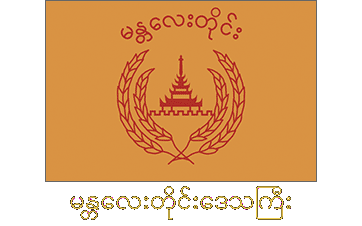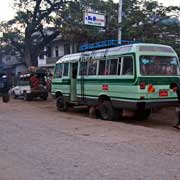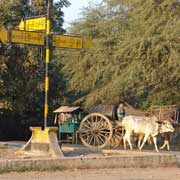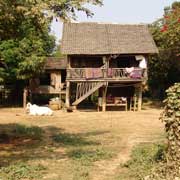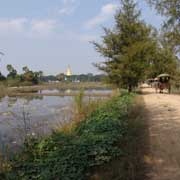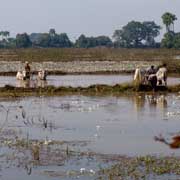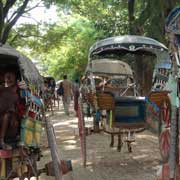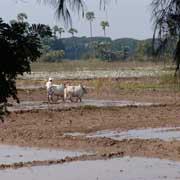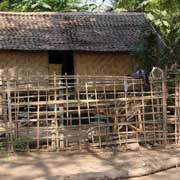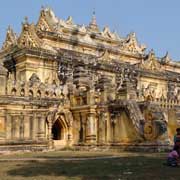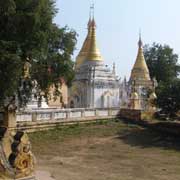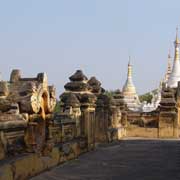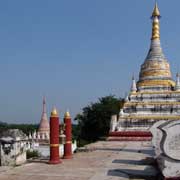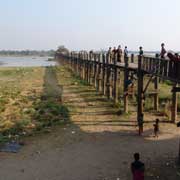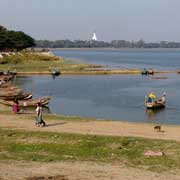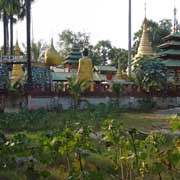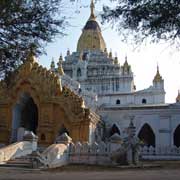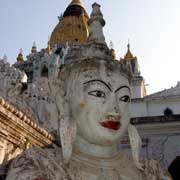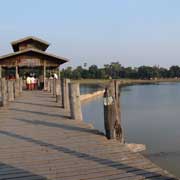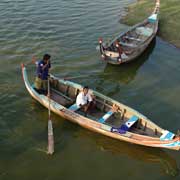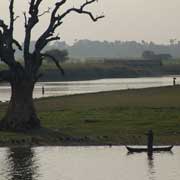Photos of Mandalay Region - the Ancient Capitals, Myanmar
Mandalay Region - the Ancient Capitals
For much of Burmese history political power was centred around this area. As early as the First century CE the Pyu people dominated this region. They were decimated in wars with Nanzhao, a kingdom in what is now Chinese Yunnan and during this time, in the 9th century, the Burmans arrived from that region and founded Bagan (Pagan) in 849.
you may then send it as a postcard if you wish.
By late 11th century all of present-day Myanmar was dominated by Bagan. It fell to the Mongols in 1287 and after them the central region was controlled by petty kingdoms (Myinsaing, Pinya and Sagaing). In 1364 it was reunified by the Inwa (or Ava) Kingdom, led by Burmanised Shan kings and this lasted until 1527. The region was under the Taungoo dynasty, with its capital in Bago (Pegu) until 1599 when, following the collapse of the Second Burmese Empire, the capital of a much reduced kingdom was moved back to Ava.
In 1752 Ava was sacked by the armies of the Restored Hanthawaddy Kingdom but king Hsinbyushin, the second son of Alaungpaya, began the reconstruction of the city in March 1764, and moved the capital back to a newly rebuilt Ava on 23 July 1765. King Bodawpaya moved the capital to Amarapura ("City of Immortality") in May 1783 but his grandson King Bagyidaw moved it back to Ava in November 1821. From 22 to 23 March 1839 the region was hit by a series of earthquakes and Ava was levelled with great loss of life. It was abandoned and King Tharrawaddy Min, who had overthrown Bagyidaw and become king two years earlier, moved the capital back to Amarapura in February 1842.
There are some ruined stupas in what was the Royal capital of Inwa (Ava), and the old teak monastery of Bagaya Kyaung, dating from 1834, that has survived the 1839 earthquake. The ornately carved brick and stucco Maha Aungmye Bonzan monastery, built in 1822, was badly damaged in the earthquake but restored in 1872. Amarapura has its famous 1.2 kilometre long teak U Bein's foot bridge across Taungthaman Lake but not much else, as King Mindon, who in 1857 started to build the new capital of Mandalay, 11 kilometres north of Amarapura, had decided to reuse as much materials as possible from Amarapura, his treasury being depleted after the Second Burmese War. The palace buildings were dismantled and moved by elephant to the new location and the city walls were pulled down for use as building materials for roads and railways. On 23 May 1857 Amarapura officially ceased being the capital.
